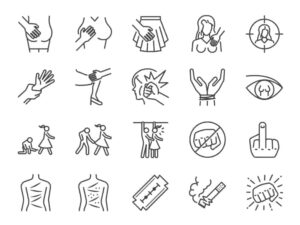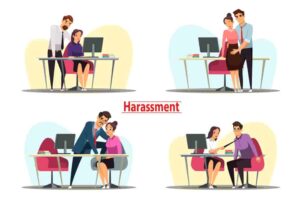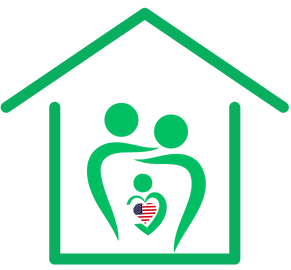Many people are confused about the grounds for a harassment lawsuit. Some people may experience such encounters but are unaware of their rights. If someone stalks you in real life or you have been targeted for cyberstalking, you can sue someone for harassment.
There are various situations in which you can sue others for harassment, like online harassment, sexual harassment, workplace harassment, landlord harassment, and harassing phone calls. If you are a victim of these, you can sue for harassment and plea for justice. So, continue to read this article to learn about the grounds of a harassment lawsuit.
Sue for harassment: Grounds for a Harassment Lawsuit
Harassment is employment discrimination that breaches Title VII of the Civil Rights Act of 1964, The Age Discrimination in Employment Act of 1967 (ADEA), and the Americans with Disabilities Act of 1990 (ADA). Any harassment is prohibited based on race, sex (including pregnancy), religion, national origin, disability, or age (40 or older).

Harassment is unlawful where
- Offensive conduct over time becomes a condition of continued employment.
- This conduct is severe or pervasive enough to make a work environment that a person would consider hostile, abusive, or intimidating.
Anti-discrimination laws forbid harassment against any individual in revenge for filing a discrimination charge, testifying or involving in any way in an investigation, proceeding, or lawsuit under these laws, or opposing employment practices that they reasonably consider discriminating against the individual in breach of these laws.
Annoyances, petty slights, or isolated incidents will not be at the level of illegality. To be unlawful, this conduct must create a workplace that feels intimidating, hostile, or offensive to reasonable people.
If you are suing for harassment, make sure the offensive may include offensive jokes, epithets or name-calling, slurs, physical assaults, threats, intimidation, ridicule, mockery, insults, offensive object or pictures, and many more. Improper conduct is not limited to this list.
It may occur in multiple circumstances, including these;
- The harasser is the victim’s supervisor, an agent of the employer, a co-worker, or a non-employee.
- The victim can be anyone who suffered from offensive conduct.
- Unlawful harassment can occur without any economic injury to or discharge of the victim.
Prevention is the best way to abolish harassment in the workplace. Employers should take adequate initiatives to prevent and correct unlawful harassment. They should clearly announce to the employees that illegal harassment is not tolerated in the workplace.
They should establish a significant complaint or grievance process that provides anti-harassment training to managers and employees and guides them to take immediate and appropriate action for harassment complaints. In addition, they can give a process that helps to sue for harassment.
Employers should make an environment where employees feel free to raise their concerns and have confidence that their problems will be considered. Employees should directly tell the harasser that such behavior is unwelcome and must stop unless the harasser has to face a legal lawsuit. Employees should report harassment at an early stage to the management to prevent its escalation.
Employer Liability For Harassment
The employer is directly accountable for harassment by a supervisor or manager, resulting in an adverse employment action like termination, failure to promote or recruit, and loss of wages. If the manager’s harassment leads to a hostile work environment, the employer can avoid liability only if
- It puts efforts into preventing and promptly correcting the harassing behavior.
- The employee failed to take advantage of any preventive or corrective measures provided by the employer.
The employer will be responsible for harassment by non-supervisor employees or non-employees with control over it, like independent contractors or customers if it knew or should have known about the discriminatory or harassing behavior or failed to take immediate and appropriate corrective action.
When an investigation of harassment allegations initiates, EEOC refers to the entire record, including the nature of the conduct and the context in which the alleged situation occurred. Whether the harassment is severe or pervasive enough for the legal lawsuit will be made on the grounds of a harassment lawsuit.
Laws And Legal Rules That You Should be Aware Of Before Suing For Harassment
Harassment is a kind of discrimination from a legal perspective, and it is illegal if harassment is based on specific characteristics of a targeted person like gender, race, weight, or age. Title VII of the Civil Rights Act of 1964 and states’ anti-discrimination laws prohibit such discrimination.

- Title VII of the Civil Rights Act of 1964
This law doesn’t protect employees from being harassed in their offices and workplace. This law prohibits inappropriate behavior of a sexual nature that deters individuals from doing their work or creates a hostile work environment. His law decides the grounds for a harassment lawsuit. Title VII can’t apply to individuals; it applies to companies that make an unlawful environment so that any employee can be sexually harassed. This law forbids action for reporting harassment or participating in an active investigation. - State laws on Criminate Harassment:
Typically, harassment laws vary from one state to another, but in all of them, harassment is a crime. These state laws consider the different levels of harassment for punishments. In some cases, they consider harassment a high-level corruption; in others, it is considered a low-level felony. If you are suing for harassment, you must refer to the state laws first.
People can be charged with higher-level punishment; they;- Have been convicted of domestic violence or harassment offense
- Violate restraining order
- Targeted someone based on color, race, nationality, ancestry, religion, gender, age, sexual orientation, or disability.
- These state laws depending on the state. It would help if you researched them when you sue for harassment.
See More: Houses For Rent By Owner Accepting Section 8
What Is And What Isn’t Harassment?
Can you sue for harassment? Many people encounter this question in mind. People often get confused between the incidents count as harassment or not. They should be sure whether the harassment incident is enough to file a claim or a lawsuit. They should have to be sure that a particular behavior is considered harassment.
One job aspirant posted a story on Reddit to identify whether the situation she encountered during her interview could be a form of sexual harassment. She needs a reference from her former supervisors to find a new job. One of her former supervisors asked her to send him pleasurable pictures of herself that would motivate him to write an excellent reference for her.
Another Reddit user was also not sure whether she found herself in sexual harassment or not. One interviewer asked her whether she had a boyfriend and when she last dated a boy. She was confused about whether this question was considered harassment or not.
After suing for harassment, victims feel guilty against those who harassed them and want to withdraw their harassment lawsuit. Any unwelcome comment or behavior on race, religion, sex, national origin, age, genetic information, or disability is harassment.
Harassment must include actions that intimidate, offend, or frighten the employee or create a hostile work atmosphere. It is considered unlawful, and the victim can file a lawsuit.
| Considered Harassment | Not Considered Harassment |
|
|
People often seem confused in differentiating what is considered harassment in the workplace. The Federal Act distinguishes between two kinds of workplace harassment;
- Quid Pro Quo
It applies to incidents where an employee is forced to give sexual favors to earn a promotion or keep their job. An example is that a supervisor may offer an employee promotion only if she meets his or her sexual demands or threaten termination if she refuses to do so. These kinds of harassment usually occur between someone in a position of power and a subordinate. - Hostile work environment
It refers to situations where the employee’s workplace becomes intimidating, hostile, or offensive due to supervisors, colleagues, o clients’ explicit behavior. It includes frequent and unwanted sexual comments, advances, requests, bad jokes, or shows of inappropriate or offensive materials. An isolated incident to start a sexual relationship is not considered unlawful harassment and does not usually seem like a hostile environment. The harassment activity has to be repeated to make the workplace insufferable for an employee. These kinds of harassment are found across all company levels, and it doesn’t depend on the position of the harasser and victim. Read further if you wonder how to sue for harassment.
When And How To Sue Someone For Harassment?
Different types of procedures and actions are to other kinds of harassment. If you have encountered or experienced harassment, you can file a civil court lawsuit. Some severe types of harassment can be taken to federal court.

Irrespective of civil or federal harassment lawsuit, to succeed in the case, you must have to prove in the court that the behavior is;
- Based on the victim’s characteristics like gender, race, sex, ethnicity, and many more.
- Offensive
- Unwelcome
- Aggressive and insurable enough to affect the victim’s employment (this applies to only workplace harassment)
See More: Get Free Child Custody Lawyers For Mothers
Civil harassment Lawsuit
When an employee faces a minimum of two harassing incidents by the same person or group of people, it is considered harassment. An employee can take action in the civil court against the person or group of people that harass an employee. If the civil court accepts that the incident has harassment, the court will order the person or people to stop harassing you.
Even after civil, it is a criminal offense. It can be prosecuted in criminal court. You can get a harassment lawsuit; they won’t receive compensation, a restraining order, or an order of protection if you make a civil claim.
| Measures and Orders | Definition |
|---|---|
| Compensation | You would get financial compensation if you suffered financial, emotional, or physical damage or loss. |
| Restraining order | A civil harassment restraining order helps protect people from violence, stalking, severe harassment, or threats of violence. |
| Order of Protection | An Order of Protection orders the abuser (you have some relationship) not to harass or contact you. |
Such kinds of orders from civil courts help the victim to survive. Still, if the harasser violates these court orders, the harasser will be prosecuted for the criminal offense or increase the harassment charge’s seriousness.
Filing a Federal Lawsuit
If you are harassed at your workplace, you can file a harassment or discrimination lawsuit. However, you need to file a complaint to the Equal Employment Opportunity Commission (EEOC). It is a national agency that deals with anti-discrimination laws and rules. Now you will know how to sue someone for harassment.
When you file a complaint in EEOC, the agency will determine how to handle your claims. The most important thing you should note is that you can’t sue the person harassing you; you can only sue your employers, as these claims are filed under Act VII. In this act, the company or employer will be held accountable for allowing the harassment of one of its employees.
Once the EEOC has investigated your claim, EEOC will issue you a right-to-sue letter that allows you to take this lawsuit to federal court. However, this investigation can be tedious, long, and complicated. During this investigation, you will be interviewed by EEOC, and your employer, colleagues, and the harasser have to face this interview with EEOC. EEOC will try to resolve this harassment issue by mediation.
You should know that if the agency has decided to investigate your case, the harasser will be informed that you have filed a claim against the employer.
ACT VII will protect you against retaliation. You can’t be fired, transferred, demoted, or paid less, but it may affect you mentally because working in such a conflicting environment may not be the most pleasant experience for you.
Once the investigation of EEOC finishes, you will receive the right to sue letter, and then you can file a harassment suit in federal court.
There are strict time limits for filing a complaint with the EEOC ad suing in federal court. You have to follow these time limits.
| Action | Time Limit |
|---|---|
| File a job harassment complaint with the EEOC | 180 days from the day the last harassment incident happened |
| File a complaint with the EEOC when a state or local anti-discrimination law also includes the complaint | 300 days from the moment the harassment took place |
| File a charge of discrimination/harassment | 180 days starting from the last time you experienced harassment |
| File a charge of discrimination if a state or local agency enforces a law that prohibits employment discrimination | 300 days from the day the last discrimination situation happened |
The court fixes 90 days deadline for filing. If you are failed to file a lawsuit in time, your case will be put on hold, and you will be prevented from going further with your suit.
Things You Should Do Before You Sue Someone For Harassment
Can you sue someone for harassment? Yes, you have to send it up for yourself. Consider various options beforehand if you are determined to take your claim to trial. Some of these actions may help you to get rid of the harasser.

If the harasser doesn’t stop after trial, the court will look for your safety and make positive attempts to internally solve your problem between the employees or within the company.
If the court judges identify your issues as insufficient to be addressed, They will be dismissed. It is your responsibility to follow these four steps, and it will strengthen your case;
- Document everything
- Tell the harasser to stop such behavior
- Research your company’s policy against harassment.
- File a harassment complaint in your company
Document everything
If you have decided to file a lawsuit for harassment, you need strong evidence supporting your claim. This evidence should be detailed and robust. You should take photos, and screenshots, save any physical proof like letters and gifts, and note everything relevant to your case.
It will help you to make substantial grounds for a harassment lawsuit. You can keep a diary or notebook in a safe place and make sure it has documents details like;
- Date, location, and time of every incident
- Name of harassers and witnesses
- Screenshots or pdfs of any inappropriate emails, texts, photos, videos, or any relevant social post
- Any attempt to complain about this problem may be verbal or written.
Tell the person harassing you to stop.
It will benefit you to tell the person harassing you to stop the unwanted behavior. It will help to strengthen your case. If you can’t do it personally or verbally, you can also send an email or any written application about this issue. Make sure you write clearly and precisely. This written application will help in court to prove your claim.
Research your company’s harassment policy
It is essential to have a policy on harassment, and if your company has such a policy, you should go through the procedure and guidelines for reporting harassment. You can easily find such a procedure on your company’s website or notice board. You should contact the HR manager if you don’t see such guidelines or policies.
Report Harassment to your Company
Many people feel reluctant to report the harassment suit to the company they are working for. However, it is an essential step. It will help you in the trial, and you can claim the support. Make sure you have all documents, whether it is a written complaint or email. If you have verbal communication, make sure to record everything.
Even after doing all of these, you haven’t reached a positive conclusion; you can file a claim to the EEOC within 90 days of the first time you have experienced harassment at work.
FAQs
- How to sue for harassment?
If you have decided to sue for harassment, you must have strong evidence and documents supporting your claim. Detailed information is given in this article. - How to sue someone for harassment?
There are two ways of suing for harassment. You can file a harassment suit in civil court or federal court. But before these, you need to file a complaint in EEOC. - Can you sue someone for harassment?
Yes, definitely. You can sue someone for harassment, a matter of self-respective and dignity. You should fight for your human rights. - Can you sue for harassment?
Yes, indeed. You should sue for harassment if someone is continuously harassing you with your protected traits like gender, sex, or anything mentioned above.
Conclusion
Hopefully, this article helps you to find the grounds for a harassment lawsuit. You shouldn’t tolerate such kind of behavior, and you should stand up for yourself. The court will bring justice and punish the harasser. Comment below if you have any questions.

